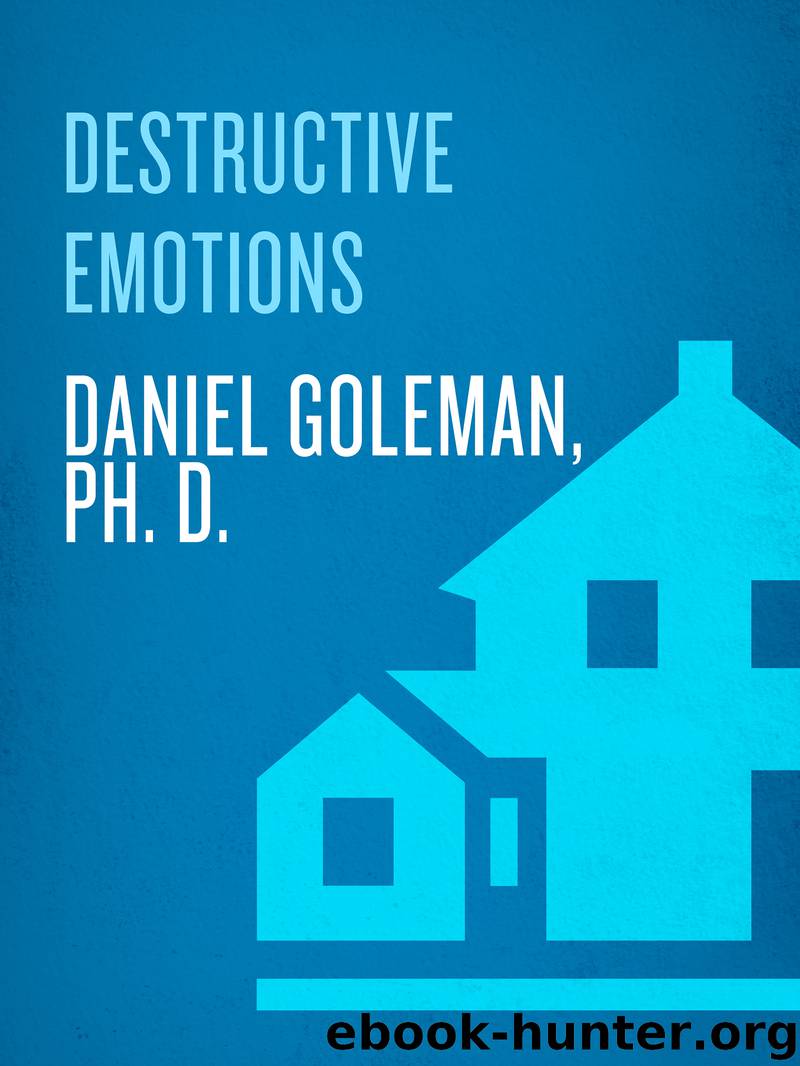Destructive EMOTIONS: A Scientific Dialogue with the Dalai Lama by Daniel Goleman

Author:Daniel Goleman [Goleman, Daniel]
Language: eng
Format: epub
Publisher: BANTAM BOOKS
Published: 2008-11-18T16:00:00+00:00
9
Our Potential for Change
In the best-selling book The Monk and the Philosopher, Matthieu Ricard and his father, the French philosopher Jean-François Revel, engage in a wide-ranging dialogue on science, Buddhism, and the meaning of life. In the book, Matthieu argues that for two millennia or more Buddhist practitioners have been utilizing what amounts to an “inner science,” a systematic method for transforming the inner world to produce a better human being—more selfless and compassionate, with greater calm and equanimity. One result of that program, he observes, is relief from the tyranny of destructive emotions.
Today, psychology has begun to embrace the same quest—not from a religious basis but from a scientific one. For psychology, the underlying quest is to influence the operation of the brain in ways that enhance emotional balance. When it comes to quelling destructive emotions, that quest seems all the more compelling.
In the morning Richard Davidson had pointed out that the brain interweaves emotion and intellect—raising the possibility that the positive potential of this connectivity might allow us to bring more intelligence to emotional life. More particularly, the dictum—unexplored in the morning's proceedings—that repeated experience modifies the brain raises the question of how we might best educate the emotions. These practical themes were to resonate through the afternoon's discussion—but not before we got off to a surprising beginning, dealing with questions about the most subtle levels of mental life.
After lunch, as an indication of his eagerness, the Dalai Lama again arrived early, as people were still gathering. He chatted with the few participants who had already arrived about the light hail that had fallen at lunch-time. As the AV crew quickly adjusted the microphones, Alan Wallace seized the moment to ask a question of his own before the session started.
Alan's question picked up on an earlier theme of the day, the links between mental activity and brain function. “Since we're not really formally assembled right now, I would like to ask His Holiness a question. Do you think that—at least at the level of gross mental functioning—there are likely to be neural correlates for each state of mind?”
The Dalai Lama replied, “There is no reason to believe that the very subtlest state—called ‘innate mind,’ the very essential nature of awareness itself, which is its luminous nature—would have neural correlates, because it is not physical, not contingent upon the brain. But for all other mental processes that manifest throughout the course of a human life, it is certainly possible.”
With his mention of “innate mind” the Dalai Lama broached a topic that has been one of his strong personal interests in brain science. His Buddhist perspective included the notion of the continuity of mind on the subtle level. That is, while he agreed with neuroscience that gross mental events correlate with brain activity, he also felt that on a more subtle level of consciousness, brain and mind are two separate entities.
Indeed, he saw the automatic assumption in cognitive neuroscience that brain and mind are invariably two sides of the same activity as limiting the scope of scientific inquiry.
Download
This site does not store any files on its server. We only index and link to content provided by other sites. Please contact the content providers to delete copyright contents if any and email us, we'll remove relevant links or contents immediately.
The Way of Zen by Alan W. Watts(6513)
Ego Is the Enemy by Ryan Holiday(5298)
The Art of Happiness by The Dalai Lama(4065)
The Book of Joy by Dalai Lama(3904)
Why Buddhism is True by Robert Wright(3405)
Spark Joy by Marie Kondo(3253)
Shift into Freedom by Loch Kelly(3139)
Happiness by Matthieu Ricard(2996)
A Monk's Guide to a Clean House and Mind by Shoukei Matsumoto(2870)
The Lost Art of Good Conversation by Sakyong Mipham(2578)
The Meaning of the Library by unknow(2508)
The Unfettered Mind: Writings from a Zen Master to a Master Swordsman by Takuan Soho(2249)
The Third Eye by T. Lobsang Rampa(2226)
Anthology by T J(2165)
Red Shambhala by Andrei Znamenski(2154)
The Diamond Cutter by Geshe Michael Roach(2022)
Thoughts Without A Thinker: Psychotherapy from a Buddhist Perspective by Epstein Mark(1965)
Twilight of Idols and Anti-Christ by Friedrich Nietzsche(1853)
Advice Not Given by Mark Epstein(1839)
